Noire et Blanche is an adaptation of Man Ray’s photo work with the same title. The new series consists of various black and white photographs showing professional and amateur models in different postures holding an African mask - a carved wooden replica by the artist.
Man Ray’s photo was originally published in 1926 the French Vogue where the magazine declares the modern white women, Kiki de Montparnasse, an evolving creature in contrast to the African mask she is holding in her hands.
Face of a woman, calm transparent egg straining to shake off the thick head of hair through which she remains bound to primitive nature. It is through women that the evolution of species to a place of full mystery will be accomplished. (Man Ray’s Noire et Blanche, May 1926, French Vogue)
In the new photos series Pohle makes use of Man Ray's techniques such as solarisation or cropping. One photo just shows the model’s head, while in another the same head is cropped and the mask itself becomes the main protagonist that evoces associations with a perfume flacon of a typical fashion shot.
Noire et Blanche deals with the notion of exoticism and with the human face as a commodity fetish. The work was produced in South Korea and raises questions in regard of global exchange and the adoption of Western attributes in mass media and the beauty industry. It opposes notions of the primitive and the modern, male and female, Western and non-Western, black and white in an unusual and new setting of gazes.Noire et Blanche experiments with the definition on otherness that originated from a series about binary opposition.
further readings: Interview on the occasion at the exhibition Noire et Blanche at Corner Art Space, Seoul, 2012/13
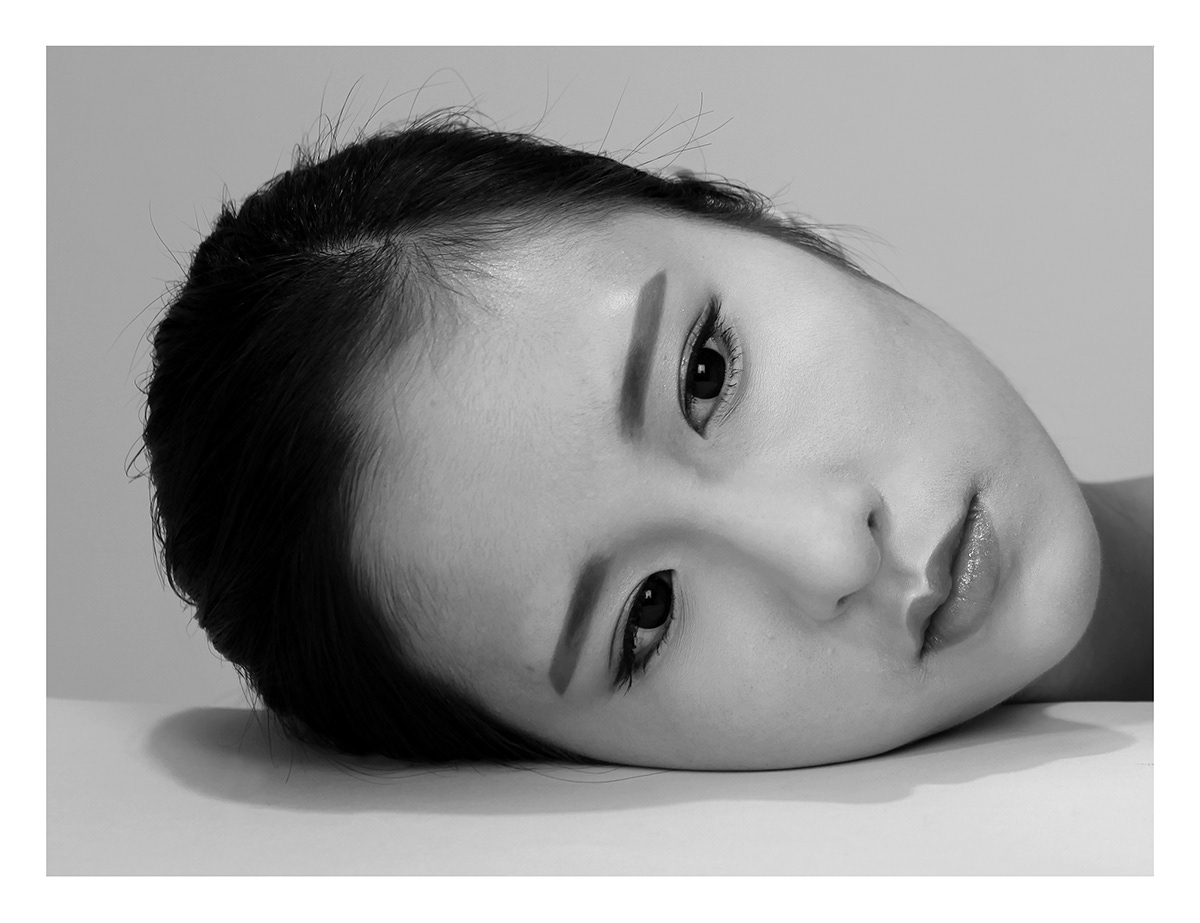
25 cm x 35 cm

23 cm x 24,75 cm
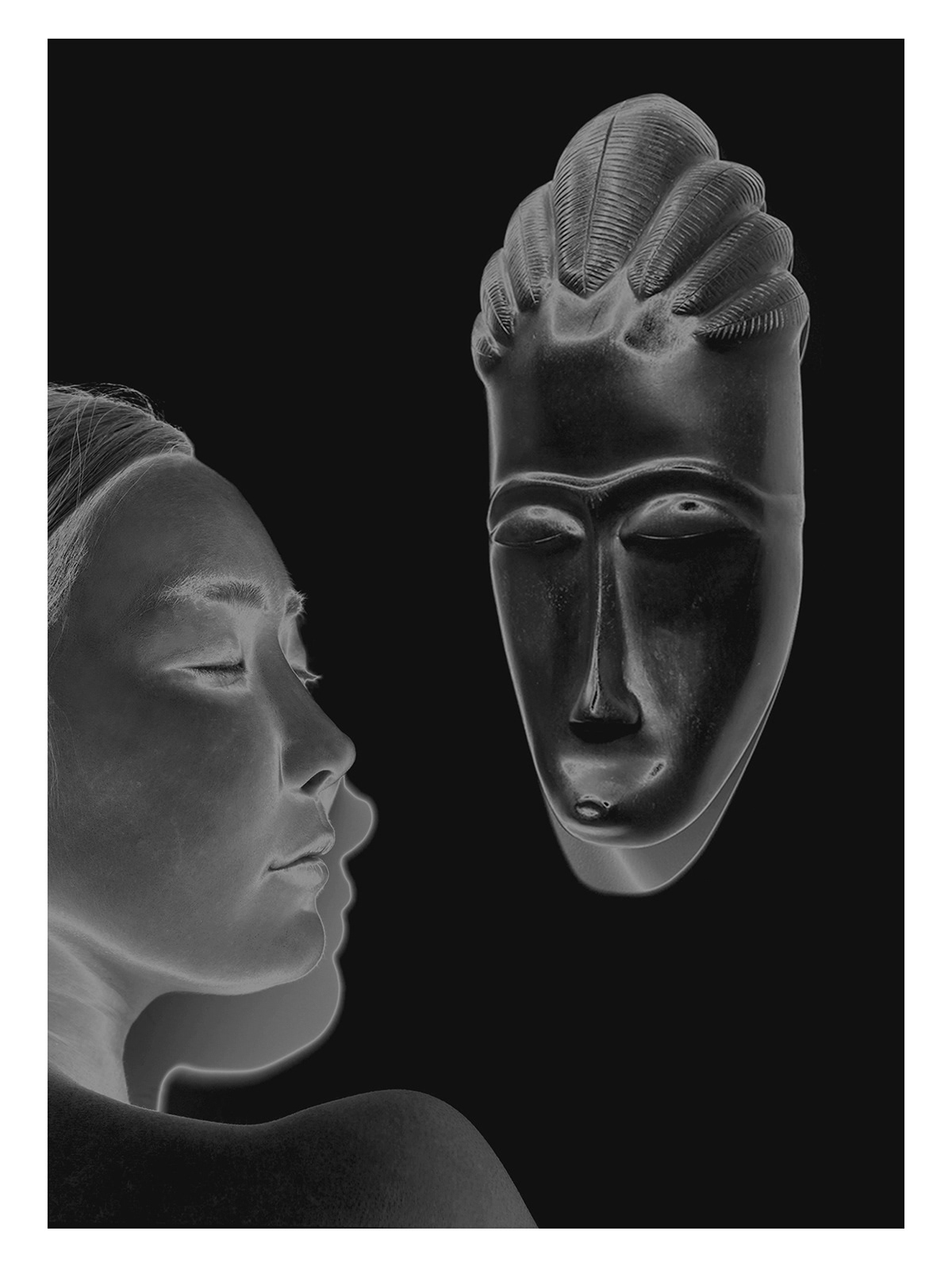
20 cm x 27 cm
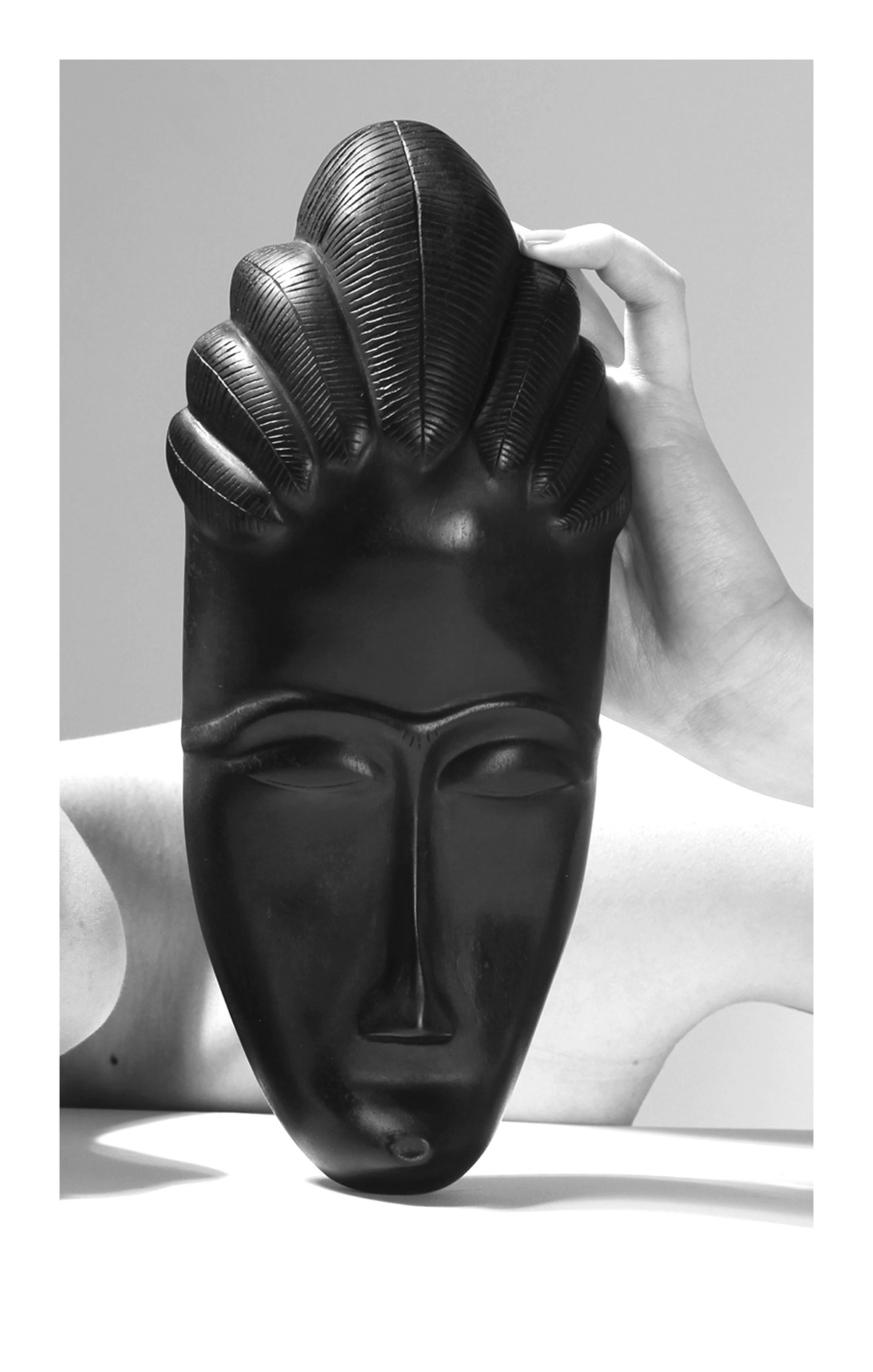
12 cm x 21 cm
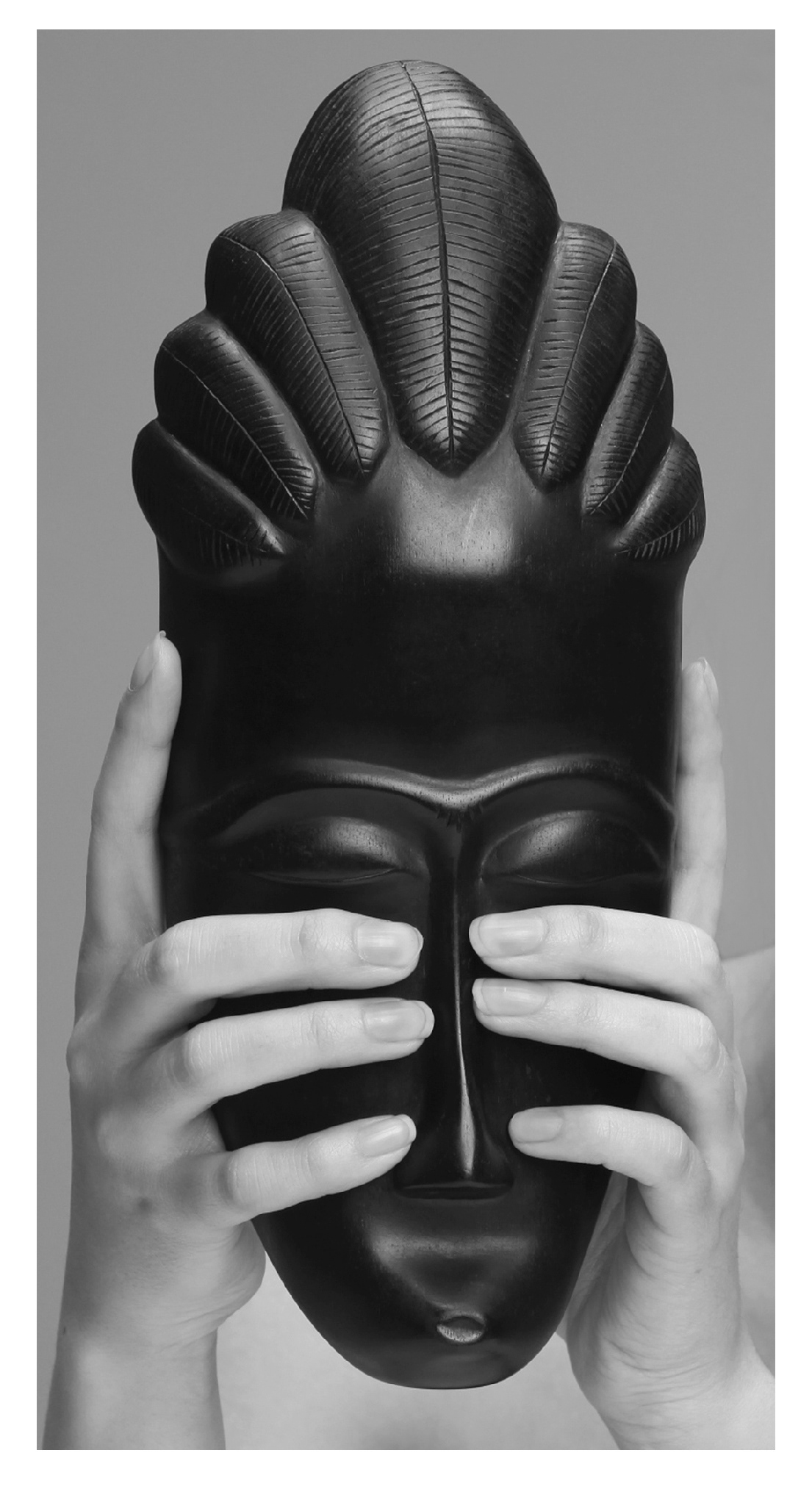
9 cm x 18 cm
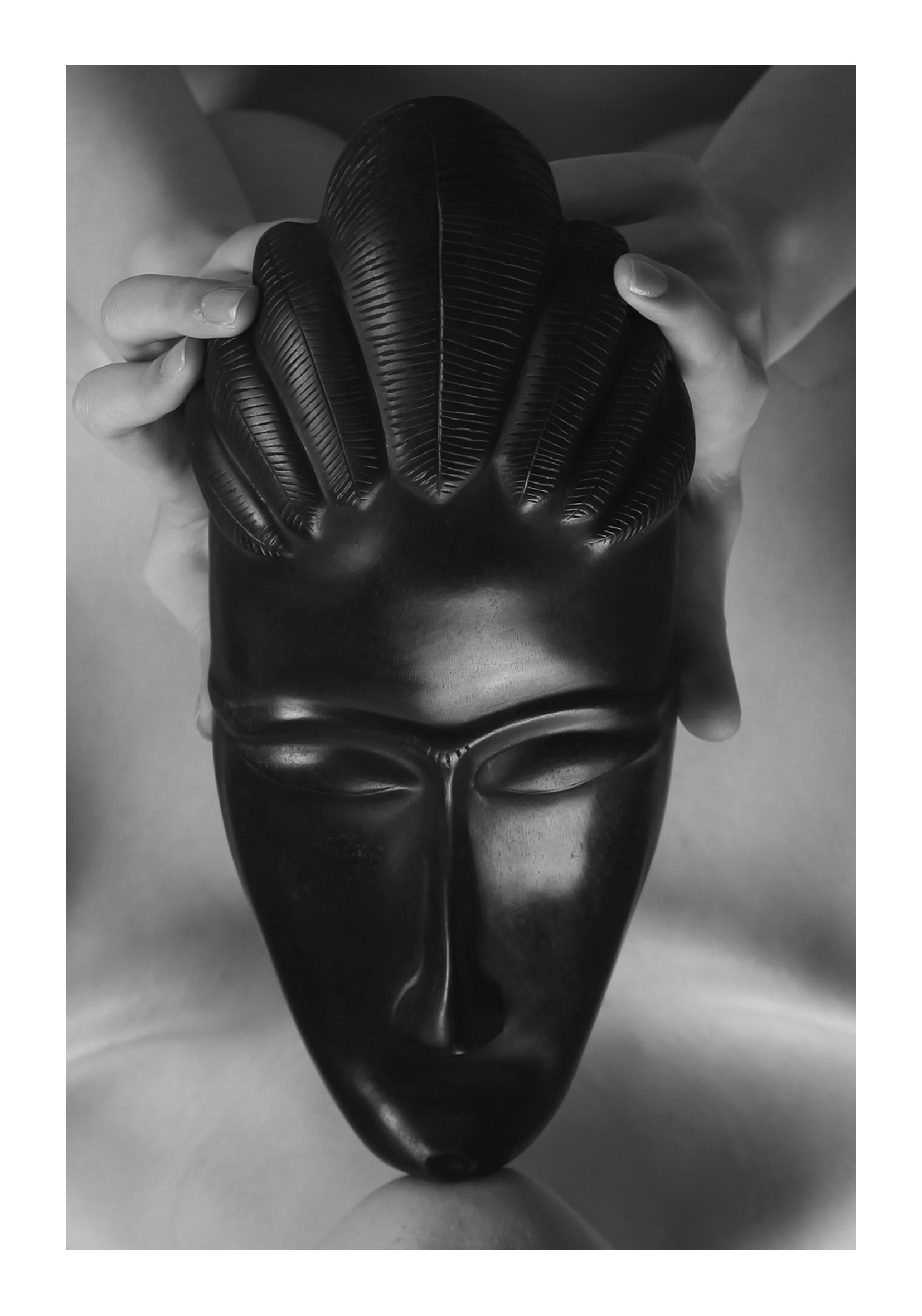
14 cm x 20 cm
Face of a woman, calm transparent egg straining to shake off the thick head of hair through which she remains bound to primitive nature. It is through women that the evolution of species to a place of full mystery will be accomplished.
Man Ray’s Noire et Blanche, May 1926, French Vogue
The primitive and the modern, male and female, Western and non-Western, black and white. The belief in dichotomy in the West defines clearly I and Others. As written in a fashion magazine in the early twentieth century, it unreservedly declares women as an instinctive entity that can evolve more easily than men because they are closer to nature. The fantasy on otherness has led a journey for search for others; European men have left civilization for an exotic land in search of the instinctive and primitive mystery. So did Paul Gauguin who left the European civilization for Tahiti in 1890 and Joseph Conrad who wrote Heart of Darkness (1899) honestly reflect the curiosity for the primitive.
However, this dichotomy has started to shake with two World Wars. When Simone de Beauvoir famously declared in her writing the Second Sex (1949) that ‘women are not born but made’, femininity was reinterpreted as a cultural and social territory, and gender became a new value system. Also, the economic development of Asia in the 70’s overturned the primitive side of the non-Western and created a new ‘other’.
Sascha Pohle experiments with this new definition on otherness that originated from a series about binary opposition. The artist, who continuously visited Asia since 2004 made artworks that embarks on a journey that is different from the perspectives of European men who in the past left for the unknown, primitive world. In his pieces, German Indian (2005-2010), he exemplifies this by the artist's media installation about Germans who tried to become American Indians. The artist reinterprets overvaluation or fantasy about the way exotic entities are viewed caused by the fetish of otherness.
This solo exhibition starts by appropriating three pre-existing artworks: the photographic works Noire et Blanche by Man Ray, the movie Face of Another by Hiroshi Teshigahara, and Statues also Die by Alain Renais and Chris Marker. These artworks redirect the viewpoints of the time that raised questions about the post-colonialist standpoint in Seoul, Asia in 2012.
Noire et Blanche is a photographic series that replaced Man Ray’s models with Korean figures. The contrast between the white face of a Korean woman and the black African face is as intense as the title suggests the duality of black and white. The contrast between the dead mask as the objectified object and the face of a living woman connects the sexual and racial difference and establishes the relationship. The interesting part is that the face of a Korean woman looks not much different from Kiki de Montparnasse in Man Ray’s works as Asia as objectified object looks out of the picture, tried to look like the world outside.
Statues also Die starts from the 1953’s documentary about how non-Western objects enter museums in the West by criticizing ‘African Statues have been degraded to an object of exhibition and died in Western museums’. Pohle created an animation of styrofoam and cardboard boxes which once contained electric devices instead of African statues. His animation which captures the changing patterns of light and shadow of empty boxes documents the empty entity of fetishized object.
Face of Another turned the Abe Kobo’s novel into a film in 1966 and features a husband. Pohle creates a window display from a scene in the movie, which a husband facially scarred in a laboratory fire having a cup of tea with his wife in their living room. The horizontal angle of the camera captures mysterious tension between the wife in the kimono and the husband in a suit with his head bandaged within the backdrop of stone statues like totems in a cabinet in the background. The scene depicts, the individual suffers when he/she must establish a new identify in the ever-changing modern city after the war.
This exhibition tells a story about the new relationship between the one who gazes and the other who receives the gaze. The gaze connects time, space, gender, race, and class in an inseparable way since the ‘discovery’ of America by Columbus. The interesting part is that woman in the screen looks back at us when we watch her in the picture through this reflection. The new world can be discovered.
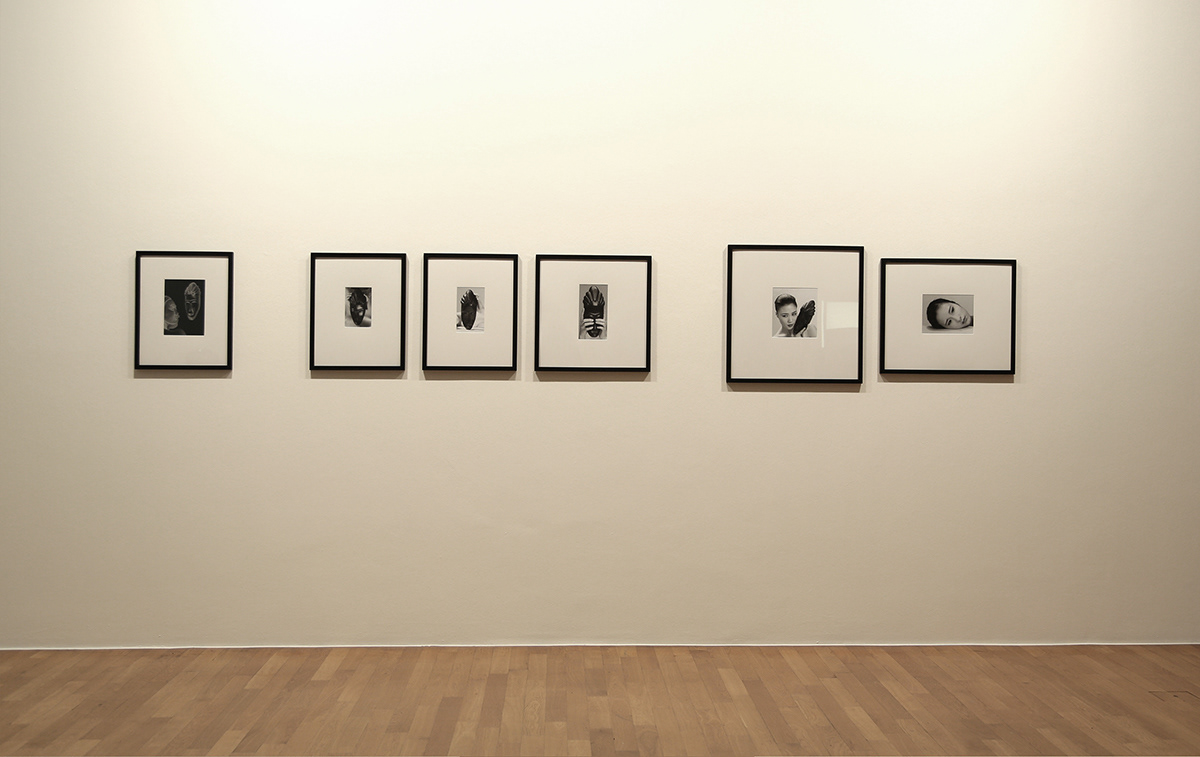
Transfer Korea-NRW, Kunstmuseum Bonn, 2013
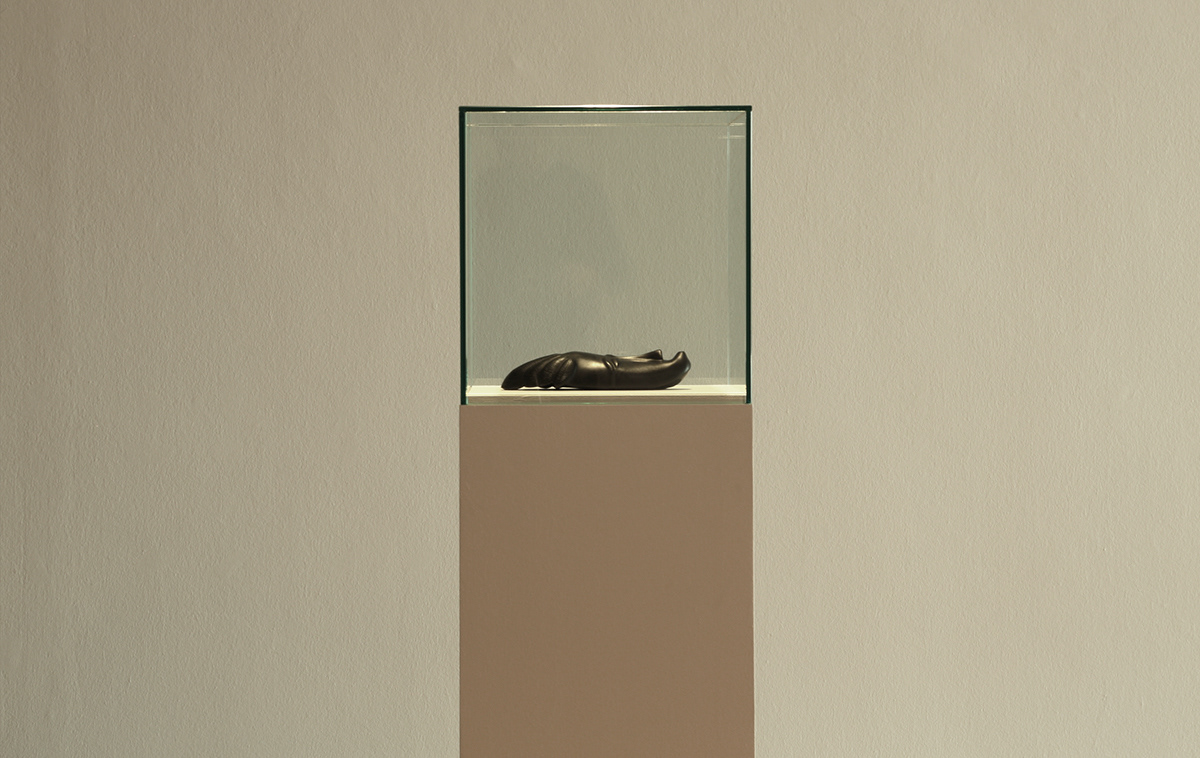
Transfer Korea-NRW, Kunstmuseum Bonn, 2013
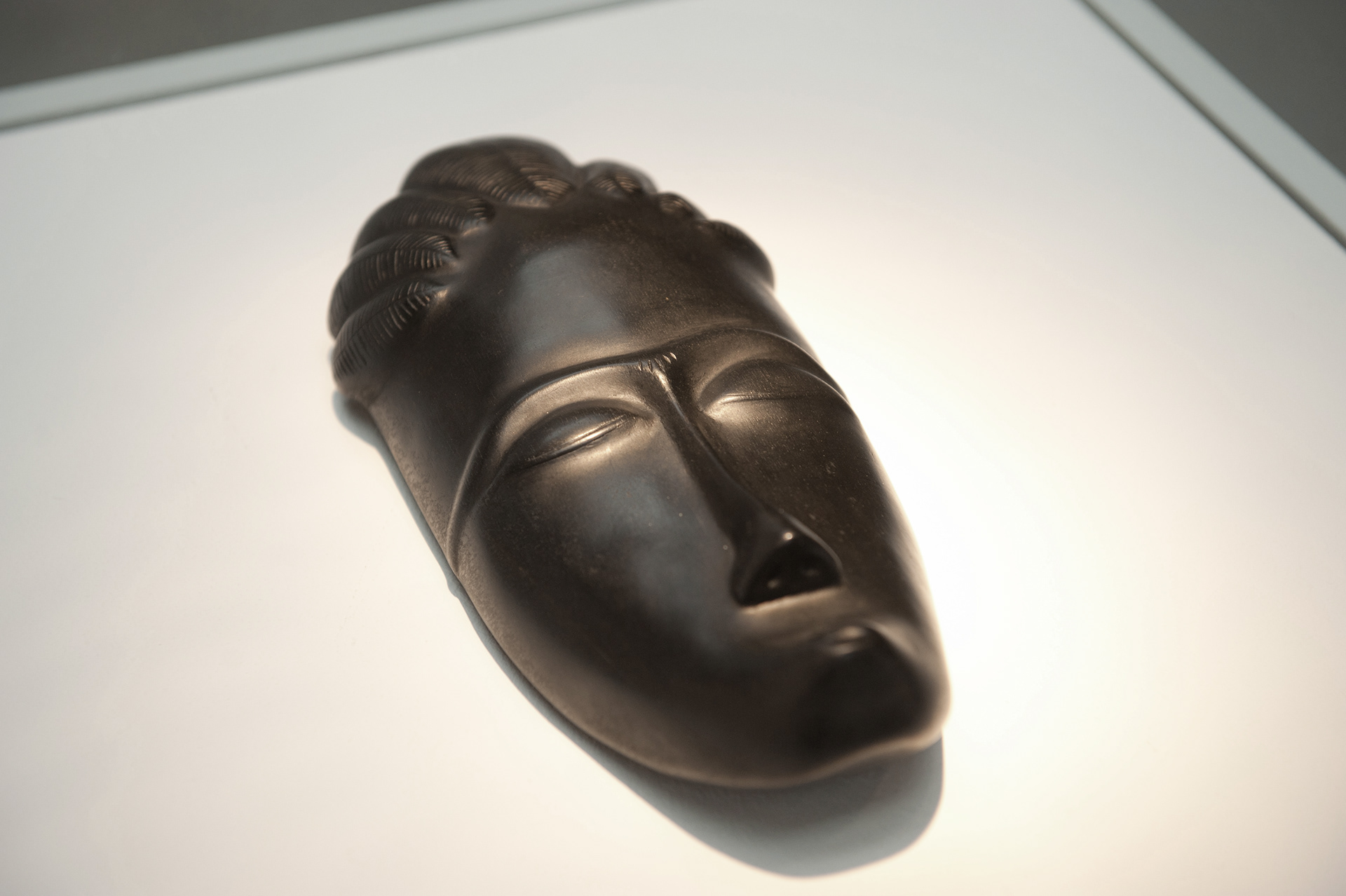
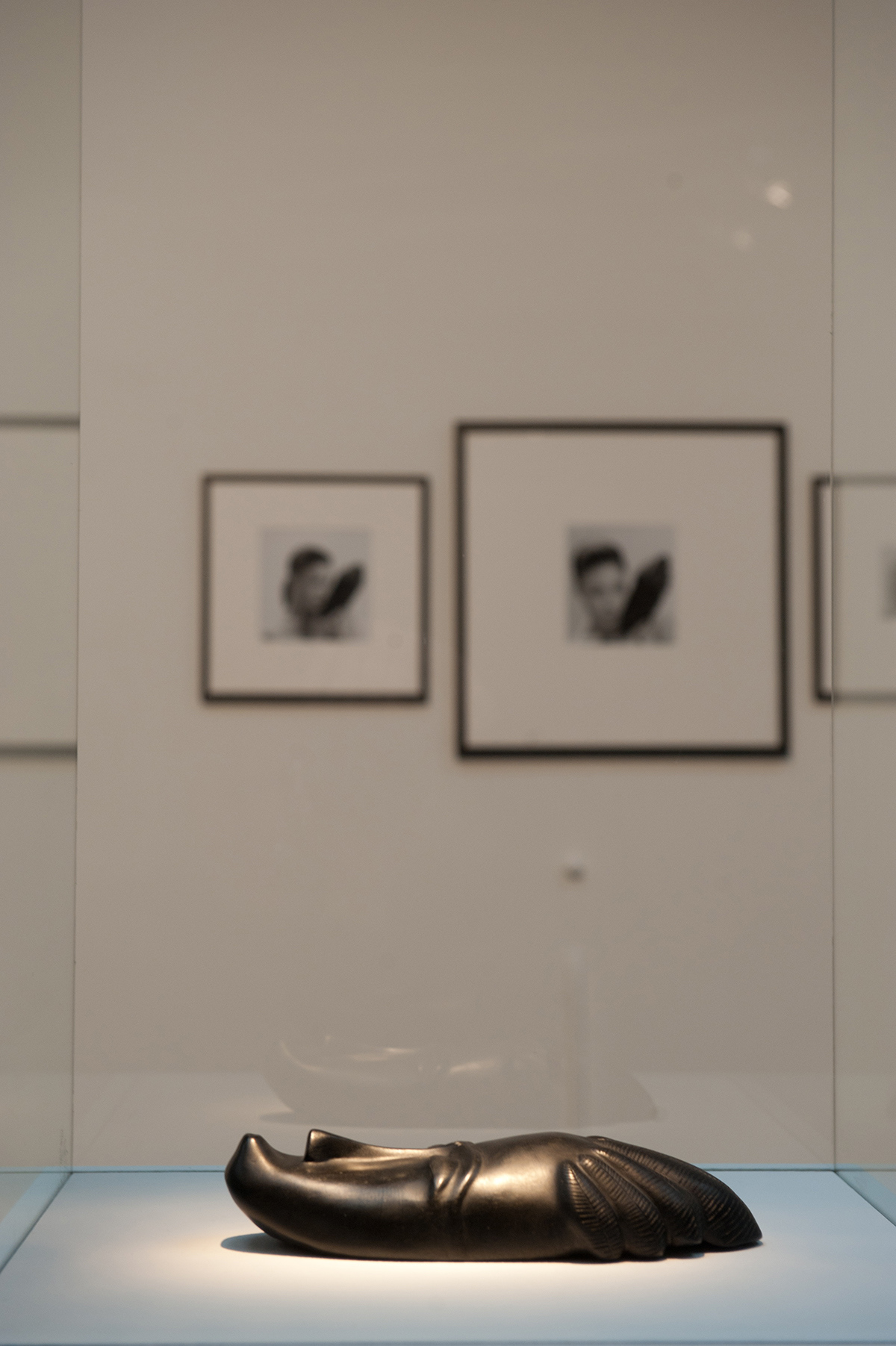

Lothringer 13, Munich, DE, 2012
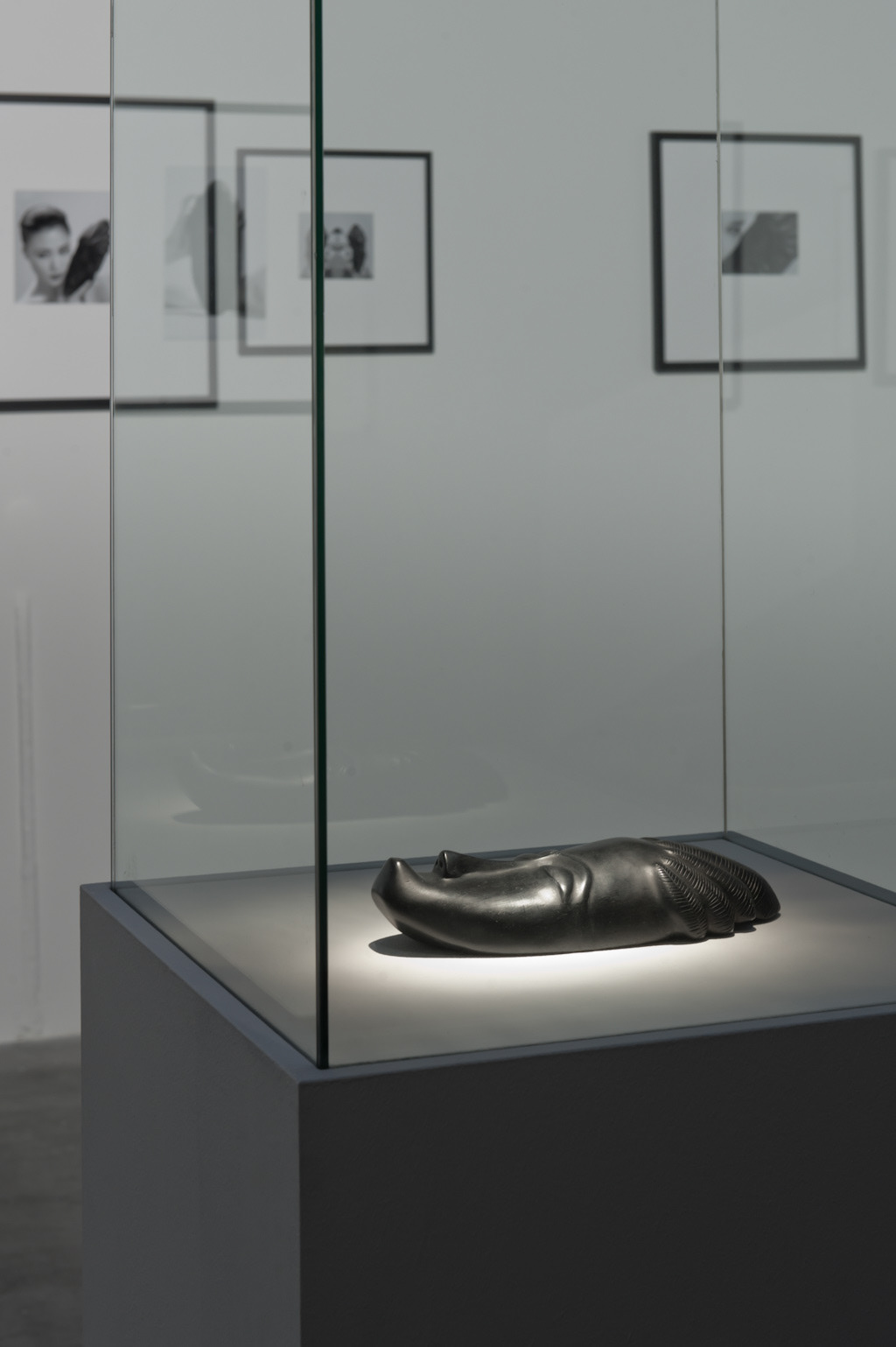
Corner Art Space, Seoul, 2013

Corner Art Space, Seoul, 2013
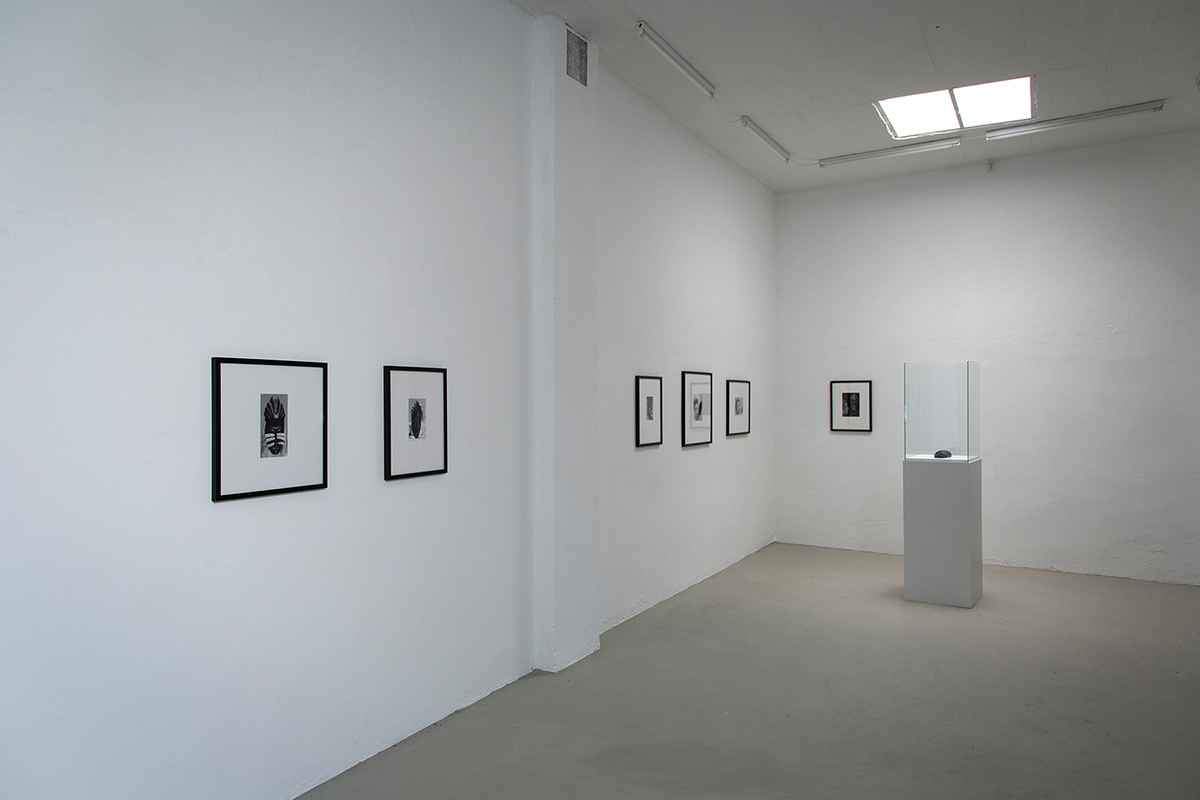
Weingruell, Karlsruhe, DE, 2012

Corner Art Space, Seoul, 2013

Corner Art Space, Seoul, 2013
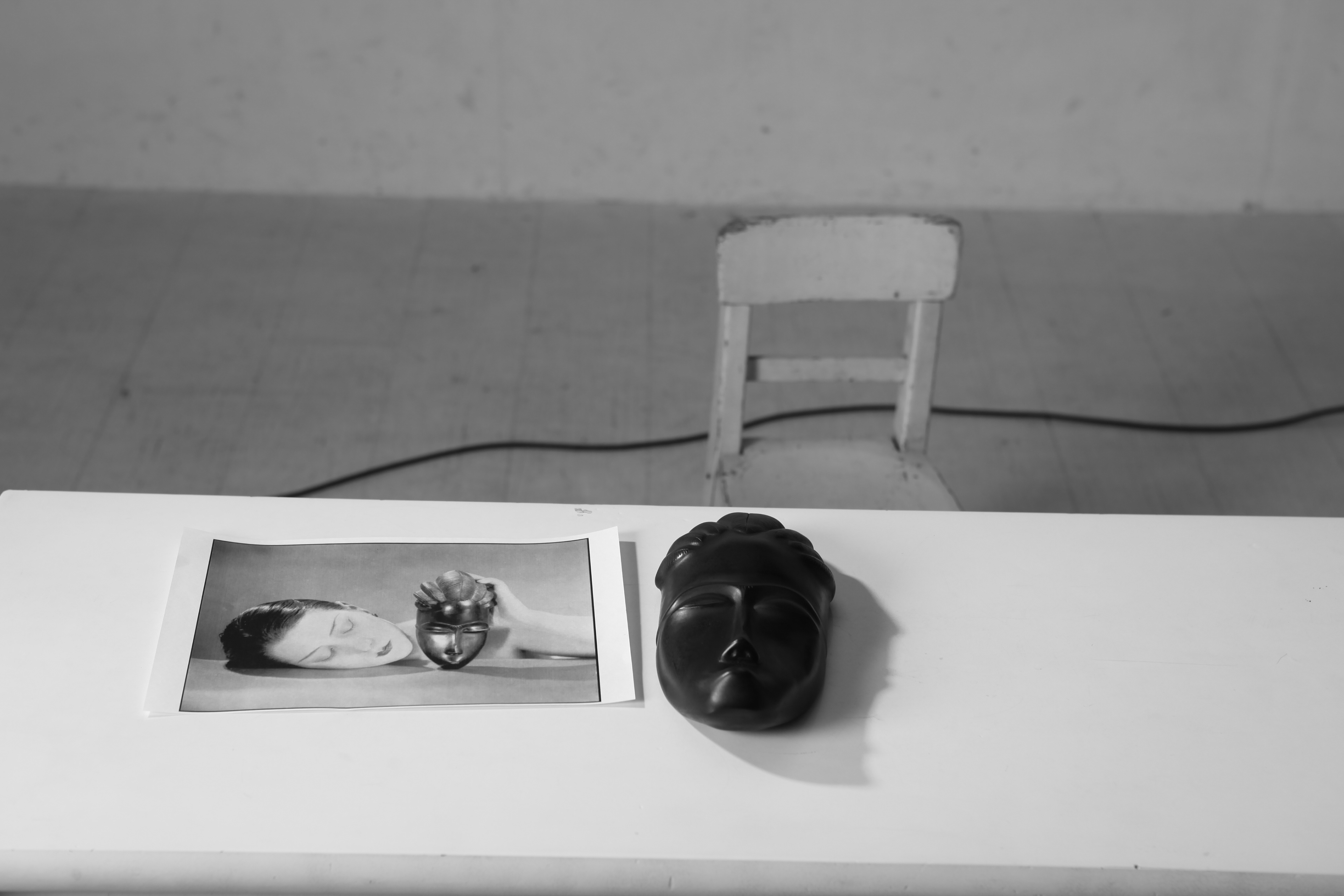
production shot


